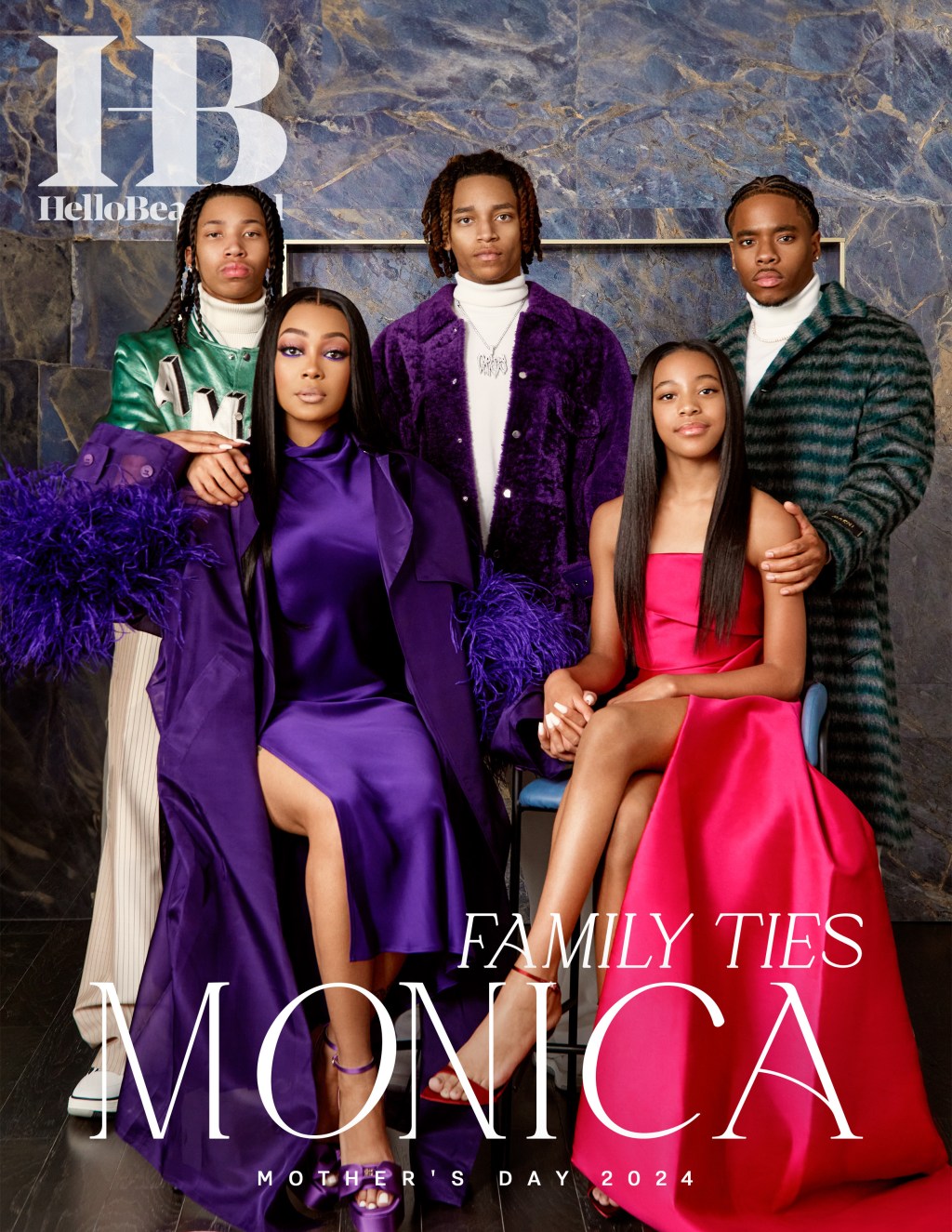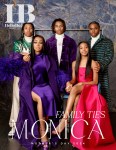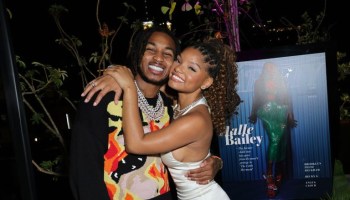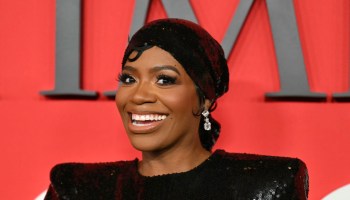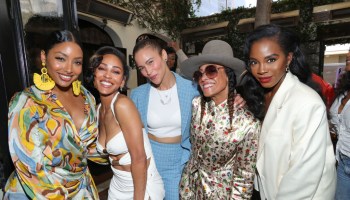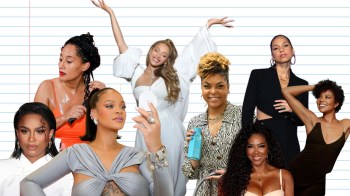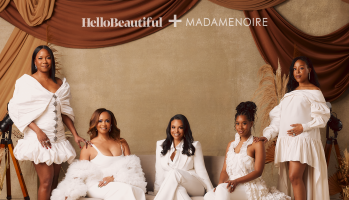Cultural appropriation is the “hot” word right now in the media. Whether it’s Kylie Jenner rocking cornrows or Beyoncé under fire for dressing like an Indian woman in Coldplay’s new video, the discussion of who can borrow and interpret from another’s culture is heated.
Cultural appropriation is the borrowing from another culture, normally by the dominant culture, without acknowledgment of the minority culture. Culture is intellectual property and when you borrow from it…the least you can do is cite your source. Cultural appropriation takes place not only in fashion, but also in art, music, dance, language, food, folklore, tradition, religion and more. Dr. Treva B. Lindsey, professor at The Ohio State University spoke exclusively with Hello Beautiful explaining the bigger beast behind appropriation,
“Appropriation has lost some of its meaning in terms of framing what happens, when we really want to talk about dynamics of power in popular culture.”
Cultural appropriation is directly linked to power and dissemination. Bantu knots are a hairstyle worn for centuries, originating from the Zulu tribe in South Africa. At the Marc Jacobs SS15 fashion show, hairstylist Guido Palau’s had models rocking “top knots.” His dismissive nature of the origin of the style is irresponsible and damaging. The hairstyle has history, largely unknown to those not of African culture and placed on top of Marc Jacobs models, all of a sudden got labeled as mainstream.
https://instagram.com/p/sxcca1vpzS/
Mainstream is correlated to relevant and unfortunately, it’s those with power that have the ability, to quickly make things relevant. There is nothing wrong with Guido Palau being inspired by Bantu knots and using them on white models. The problem arises when Palau behaves as though he invented this look and it’s something new and innovative. The popularity of the mislabeled Bantu knots has led to the top knot (one Bantu knot vs. many) being one of the “hottest” looks of “the season.” Please. Go to any black neighborhood and you would have seen this style. The sensationalizing of the style is sickening. In almost all of the articles and discussions, the origins are not mentioned. In one move, centuries of history and experience for Black women have been silenced in the mainstream. Yes, are there other sites talking about this. Of course. Mainly sites geared towards people of color. However, places like Vogue, where Marc Jacobs lives, and the readership is majority white, is not. It’s no different than learning “American history” in school and only mentioning Martin Luther King Jr. or focusing on blacks in February (yes, this happens).
“Black women with few notable exceptions (Beyoncé in this moment is one huge example of the exception) are often not credited or cited for our cultural innovations. In many cases, our skills, styles, art forms, etc. honed within Black communities, and specifically Black women/femme communities are not recognized. So when a style becomes popularized via a popular white female artist and she is credited with being a trailblazer, I think this conversation of appropriation re-surfaces.” ~ Dr. Treva Lindsey
In February, a video came out by a woman who identifies as being half Colombian and half white. Every natural Black woman knows what a twist-out is and this woman created a 4-minute video called “The Rope Trick.” What’s the rope trick? It’s a two-strand twist. Do a YouTube or Google search for a twist-out and virtually all images are of black women. Yet, people came to this woman’s defense, claiming that she had not “seen” this anywhere else and it is possible she thought she invented the style. The prior statement is extremely loaded as black women, globally and daily walk around with two stranded twists. In fact, as I type this, it’s the style I’m rocking now. These types of comments further reiterate that as black women we are not “seen.” Today, Cosmopolitan, re-appropriated undercuts (popular in the black community since the 80s) and called them “hair tattoos.” Just because one chooses to not see a culture, does not mean the history, and the culture itself, does not exist. Do better. It’s 2016. This trend of not citing our sources when it comes from Black culture has got to stop.
Even when fashion does state the style inspiration, they still rape from the culture without riding for it and respecting the sensitivity that comes with borrowing. For example, Valentino’s SS16 line, which is, in their words:
https://twitter.com/MaisonValentino/status/651388661137846272/photo/1?ref_src=twsrc%5Etfw
(Yet regal? Tribal can’t be regal?)
Show notes illustrate that the inspiration was derived from, “wild, tribal Africa,” and the fashion house exclaimed that the show (with bongo drums and all), was “a journey to the beginning of time and the essential of primitive nature.” However, out of the 89 looks showcased, only nine of them were worn by Black models and the white models all donned cornrows. With all the uproar that occurred, they still released their SS16 ad campaign with 16 “tribal inspired” images, yet only 3 images had black women at the forefront. The image below for the ad campaign shows a model with the Kenyan Masai tribe, who are being used as props for Valentino’s profit. The same way that companies have hired Diversity Officers, maybe the fashion industry needs to take a cue and have these type of people on set when they decide to dip in different waters in the name of creativity and inspiration.
https://instagram.com/p/BAp_Xj4OSdN/
There are ethics in cultural exchange and the majority culture tends to not frequently observe this rooted fact. This is a sample of African culture. When you visit cities like Lagos and Accra, they are bustling cities and not just the open, expansive, hut living images that are sold in advertising and media. Neglecting to show the robustness of a culture and focusing solely on a sliver further leads to stereotyping. Power and privilege do matter, especially in cultural exchange. Dr. Lindsey explains,
“I think folks mining Black and other minority spaces for cultural inspiration need to understand that power dynamics and histories of racism make processes of exchange far more complex.” The challenge with cultural appropriation is that the fight for recognition by the minority (recognition NOT inclusion) is often systematically dependent on the majority.
Culture is oppressed when stories are left untold and passed down biasedly. Who owns culture? The specific groups of people, who birth, live, play, fight, love, and create the specific culture. Who has access to culture? We all do, but in this ownership, responsibility and respect come into play as well. There is nothing wrong with appreciation; there is everything wrong with cultural theft. Educate yourself, educate others. Our stories are that, our stories…and that’s okay.
Misrepresentations through cultural appropriation are crimes that need to be called out.
DON’T MISS:
